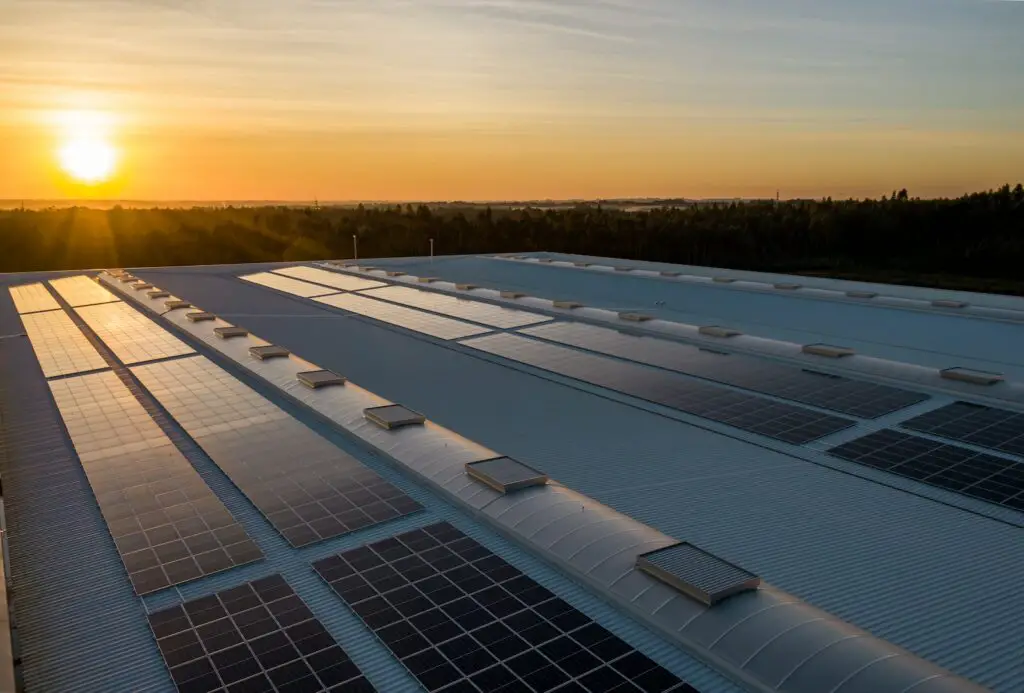While solar panels undertake the complex task of transforming sunlight into solar energy, their construction is quite straightforward when carried out professionally in a well-organized factory.
The main elements of a solar panel include solar cells, silicon, metal, and glass. These components are assembled together to create a solar panel capable of generating renewable energy.
Let us guide you through the process of solar panel creation, from the fabrication of photovoltaic cells to the framing, before they are dispatched for installation on your roof by a skilled contractor.
Where Are Solar Panels Made?
Solar panel manufacturing spans across various regions from the United States to Europe, although a significant portion is concentrated in several Asian countries.
The shift of manufacturing to regions with lower labor costs is a common trend observed in many industries in recent times.
However, many high-quality panels are produced in the U.S., ensuring a close oversight of each phase of the manufacturing process to maintain quality standards.
Exploring some examples can provide a glimpse into the geographical diversity of solar panel manufacturing.
Renowned brands like Panasonic and Mission Solar are notable mentions.
Panasonic has its manufacturing bases in the U.S. and Malaysia, while Mission Solar operates exclusively within the U.S.
On the more economical side, Jinko Solar, which is priced lower than Panasonic or Mission Solar, has its manufacturing operations in China.
Another lesser-known brand, Canadian Solar, as the name suggests, manufactures its panels in Canada.
The supply chains for the raw materials constituting a solar panel often traverse through multiple countries, implying that all components might not be sourced or processed in the same region.
Despite the global manufacturing landscape of solar panels, there’s a substantial array of U.S.-manufactured options available for selection.
Manufacturing Process of Solar Panels
Solar panels primarily comprise solar PV cells, silicon, metal, and glass, with solar cells being the critical component that converts sunlight to energy. Here’s a simplified breakdown of the manufacturing process:
Solar Cells Creation
- Silicon cells are created, either as p-type or n-type based on their charge.
- Silicon is melted, and mixed with gallium or boron to form wafers, with phosphorus added to enhance electrical capability.
- Silicon ingots are cut into sheets, anti-reflective coating is applied, and lines are cut to capture and move the electrical current.
- The cells act as semiconductors, generating electricity through the photovoltaic effect when sunlight is absorbed.
Panel Assembly
- Solar cells are soldered together to form a panel, typically consisting of 60 or 72 cells.
- A back sheet is installed to protect the cells, followed by a glass front for light filtration and protection.
- A metal frame is sealed around the panel to fuse all layers together, and a junction box is installed to protect the electrical wires.
Testing and Distribution
- Panels are tested for quality and strength before being shipped for installation on homes or solar farms.
- Each type of solar panel follows a similar manufacturing process, with slight variations based on the specific type, such as monocrystalline or polycrystalline panels, which are formed from one or many silicon fragments respectively.
Can I Make My Own Solar Panels?
We advise against crafting your own solar panels, even if assembling a panel with the correct materials might appear straightforward.
The risks associated with DIY solar panels, such as the potential of starting a fire, significantly outweigh the benefits.
Learn more about DIY solar panels:









